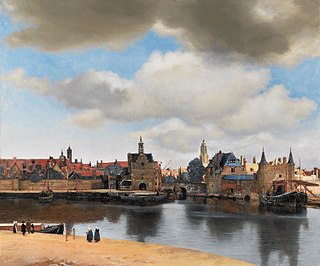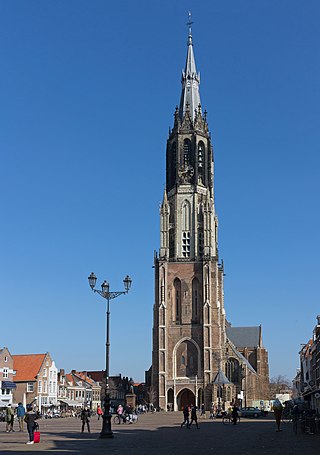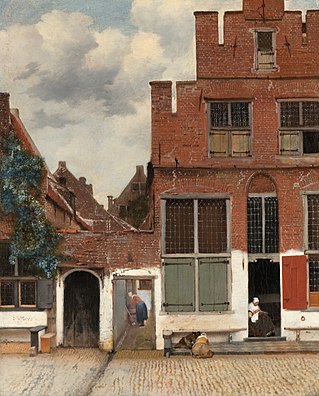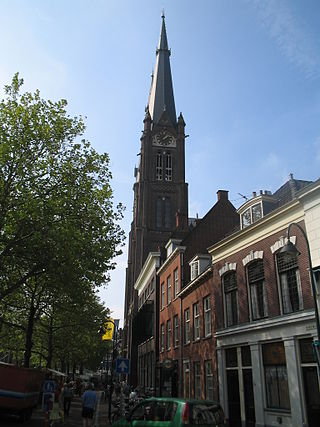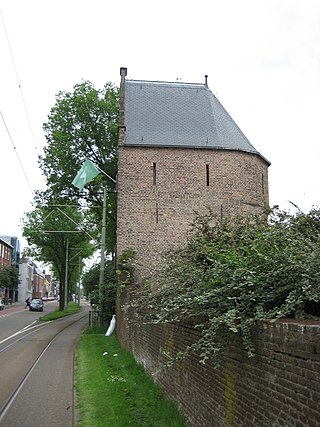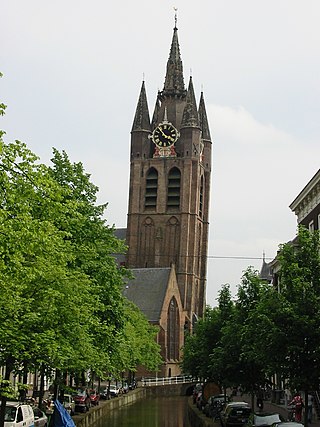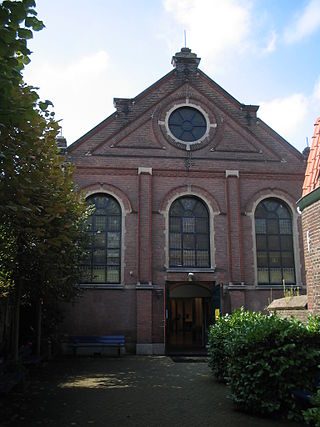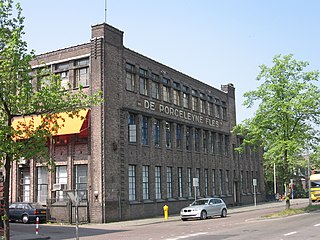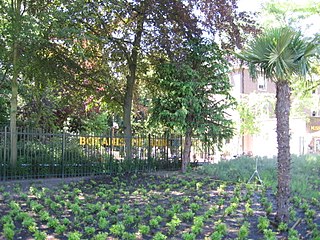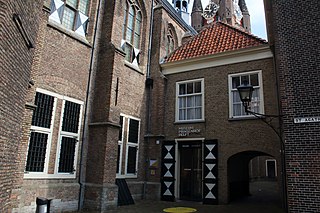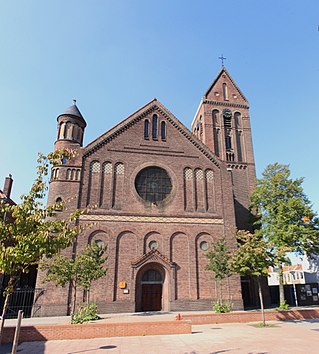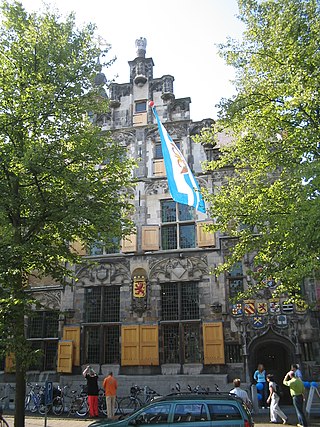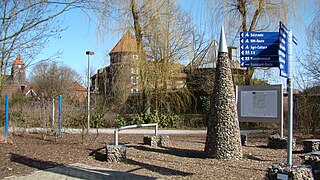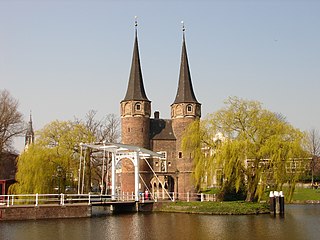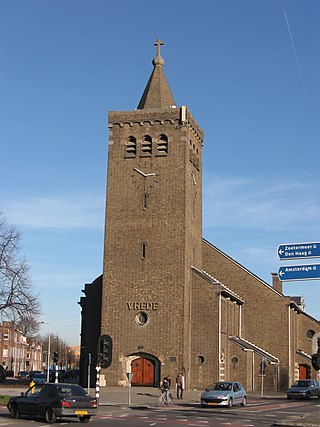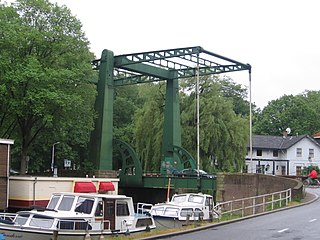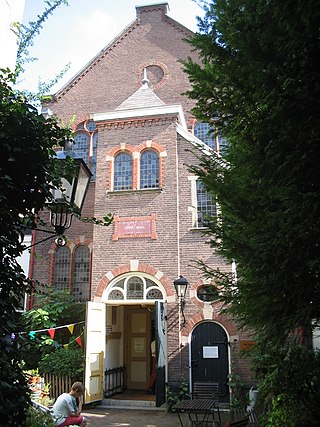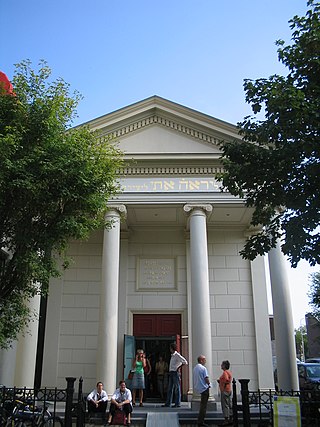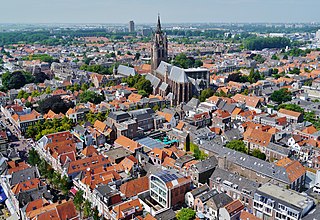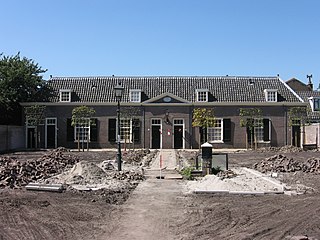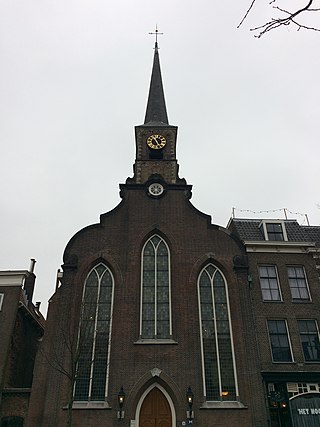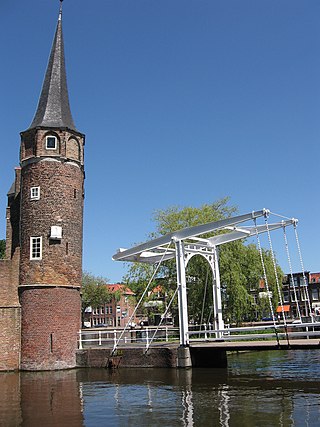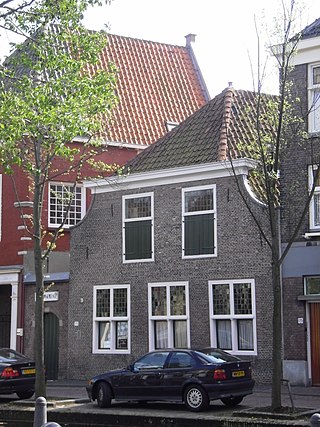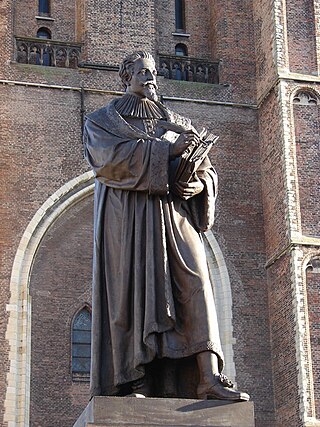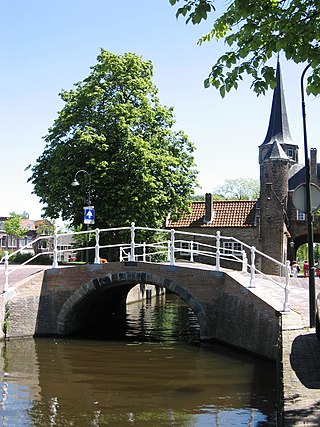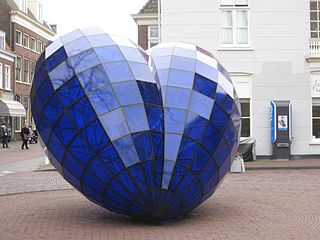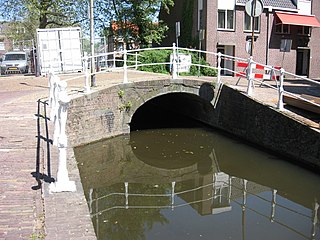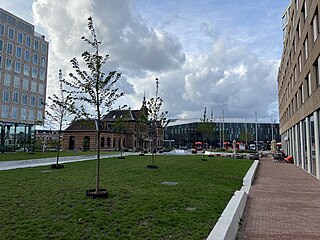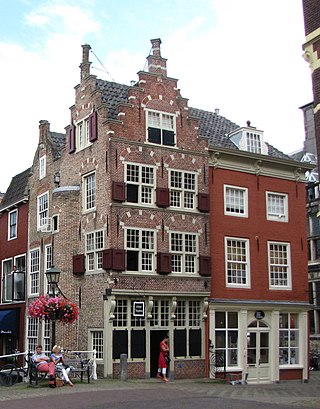48 Sights in Delft, Netherlands (with Map and Images)
Legend
Premium Sights
Book tickets, guided tours and activities in Delft.
Guided Free Walking Tours
Book free guided walking tours in Delft.
Welcome to your journey through the most beautiful sights in Delft, Netherlands! Whether you want to discover the city's historical treasures or experience its modern highlights, you'll find everything your heart desires here. Be inspired by our selection and plan your unforgettable adventure in Delft. Dive into the diversity of this fascinating city and discover everything it has to offer.
Sightseeing Tours in Delft1. View of Delft
View of Delft is an oil painting by Johannes Vermeer, painted c. 1659–1661. The painting of the Dutch artist's hometown is among his best known. It is one of three known paintings of Delft by Vermeer, along with The Little Street and the lost painting House Standing in Delft, and his only cityscape. According to art historian Emma Barker, cityscapes across water, which were popular in the Netherlands at the time, celebrated the city and its trade. Vermeer's View of Delft has been held in the Dutch Royal Cabinet of Paintings at the Mauritshuis in The Hague since its establishment in 1822.
2. New Church
The Nieuwe Kerk is a Protestant church in the city of Delft in the Netherlands. The building is located on Delft Market Square (Markt), opposite to the City Hall. In 1584, William the Silent was entombed here in a mausoleum designed by Hendrick and Pieter de Keyser. Since then, members of the House of Orange-Nassau have been entombed in the royal crypt. The latest members to have been entombed are Queen Juliana and her husband Prince Bernhard in 2004. The private royal family crypt is not open to the public. The church tower, with the most recent recreation of the spire, was designed by Pierre Cuypers and completed in 1872. It is the second highest in the Netherlands, after the Domtoren in Utrecht.
3. Straatje van Vermeer
The Little Street is a painting by the Dutch painter Johannes Vermeer, executed c. 1657–1658. It is exhibited at the Rijksmuseum of Amsterdam, and signed, below the window in the lower left-hand corner, "I V MEER".
4. Maria van Jessekerk
The Maria van Jesse Church is a neo-Gothic Roman Catholic parish church in the city of Delft, in the Dutch province of South Holland. The church was built in the period 1875 - 1882 and designed by Evert Margry, a pupil of P.J.H. Cuypers. Originally this church was dedicated to Saint Joseph, but since 1971 to Mary of Jesse. The church is now part of the Sint Ursula parish, which includes all Catholic parish churches in Delft. The church is built in the shape of a cross.
5. Bagijnetoren
The Bagijne Tower in the city of Delft, in the Dutch province of South Holland, was originally built as a watchtower and was part of the reinforcement of the city walls of Delft. On 15 April 1246, the city of Delft was granted city rights and thus also acquired the right to build a wall around the city. The Bagijnetoren is a later addition to the fortifications that was probably built around the year 1500.
6. Old Church
The Oude Kerk, nicknamed Oude Jan and Scheve Jan, is a Gothic Protestant church in the old city center of Delft, the Netherlands. Its most recognizable feature is a 75-meter-high brick tower that leans about two meters from the vertical.
7. Zuiderkerk
The Zuiderkerk in Delft, in the Dutch province of South Holland, is a former Dutch Reformed church. The church was built in 1888 to a design by G. van der Kaaden, and has elements borrowed from classicism and Renaissance. The church is located in a courtyard.
8. Royal Delft
The Koninklijke Porceleyne Fles N.V. is a Dutch manufacturer of Delftware, a type of earthenware, headquartered in Delft, the Netherlands. It is the only remaining factory out of 32 that were established in Delft during the 17th century. Today, the company has been active for over 360 years without interruption. Despite the name, its products are not in fact porcelain.
9. Hortus Botanicus
The TU Delft Hortus Botanicus, until 2022 Botanical Garden TU Delft, is a botanical garden that is part of the Delft University of Technology in Delft. The hortus was founded in 1917 by Gerrit van Iterson as a 'Culture Garden for Technical Crops'. The organization is affiliated with Botanic Gardens Conservation International and the Dutch Association of Botanical Gardens.
10. Het Prinsenhof
Het Prinsenhof is a museum in the city of Delft in the Netherlands. Formerly the monastery of St Agatha, the building changed purpose over time. The whole building came into the possession of Delft City Council by 1925, who gradually converted the building into a museum. Today, the museum shows a variety of art from Dutch Golden Age paintings, prints, cermaics and contemporary art.
11. Raamstraatkerk
The Raamstraat Church in the city of Delft, in the Dutch province of South Holland, is officially called the HH Franciscus en Clarakerk, but is also known by its old name, the HH Nicolaas en Gezellenkerk. Since 2009, this church has been one of the four Roman Catholic parish churches in the city and is part of the Saint Ursula parish.
12. Marcuskerk
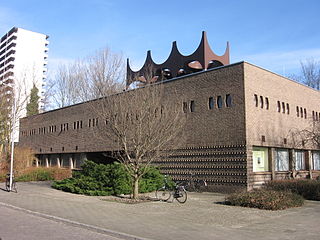
St. Mark's Church is a church located on the Roland Holstlaan in the Voorhof district of the city of Delft, in the Dutch province of South Holland. The church building is used by the Protestant Church in Delft for its worship services. St. Mark's Church was built in 1968 and then used by the Reformed Church. The organ dates from 1970. The church building was built to a design by H.W.M. Hupkes in mainly modernist design with a more expressionistic character in parts. It is a municipal monument . The design had strong similarities with the Reconciliation Church in Rijswijk, designed by Hupkes two years earlier, before it was secularized.
13. Gemeenlandshuis
The Gemeenlandshuis in Delft, in the Dutch province of South Holland, is the headquarters of the Delfland Water Board. The late Gothic house at Oude Delft 167 was built in 1505. The first owner was Jan de Heuyter, who was bailiff of Delft and bailiff of Delfland. He was also a tenant of excise duty on hops. The house was therefore also called "House with the bells" after the interior decoration with hop cones. Because of the collaboration of the De Huyter family with the Spaniards, they were evicted from their house in 1572 and the house was confiscated. Subsequently, the house provided temporary accommodation for the Hof van Holland before it was transformed into s Heeren Herberghe, a lodging house for important guests of the city and the States of Holland. Later, the building was the residence of Philip, Count of Hohenlohe who was married to Maria of Nassau, a daughter of William of Orange. Since 1645, the Delfland Water Board has been located there.
14. TOP Delft - Ackerdijkse Bos
A Tourist Transfer Point (TOP) is a 'natural junction', where various cycling, sailing, skating and walking routes start. Each TOP is recognizable by its landmark, a kind of obelisk is used in the east of the country, a blade of grass in the Green Heart and a remarkably large information column in the Gooi & Vecht region and the Rivierenland region. At TOPs there are often also some seats, a bicycle rack and a signpost. TOPs in the Gooi & Vecht region are also always equipped with bicycle rental, catering, (free) toilets, an ANWB Bicycle Service Box and a VVV information point.
15. Sociëteit Tyche
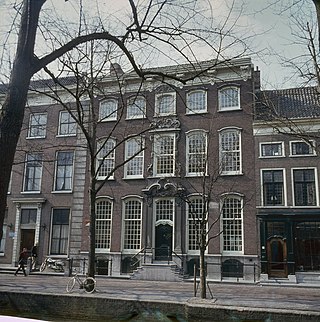
Society "Tyche" is part of the Delftsche Studenten Bond (DSB) and is located in the monumental building Oude Delft 123 in Delft, in the Dutch province of South Holland. It is the building that has served as a society in the Netherlands for the longest time. Before the Delftsche Studenten Bond moved into it in 1953, it had been the Standvastheid society since 1803. The building is a national monument.
16. Land Art Delft
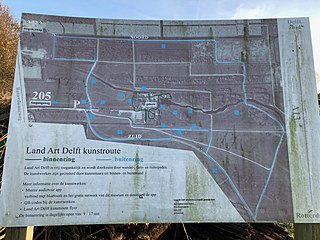
Since 2012, Land Art Delft has been a sculpture park on the south side of the Dutch city of Delft, in the Midden-Delfland area. The collection contains modern sculptures, installations and Land art by national and international artists.
17. Eastern Gate
The Eastern Gate in Delft, Netherlands, is an example of Brick Gothic northern European architecture that was built around 1400. Around 1510, the towers were enhanced with an additional octagonal floor and high spires. The gate was restored in 1964. It currently serves as an art gallery and private residence.
18. Vredeskerk
The Church of Peace or Church of the Holy Sacrament is a Roman Catholic parish church in the Wippolder district in the city of Delft, in the Dutch province of South Holland. The church is part of the Sint Ursula parish and is located at the intersection Nassaulaan/Julianalaan (Poortlandplein). The building was designed by the architects H. Thunnissen, J.H. Hendricks and Th. van Rossum.
19. Vierhovenkerk
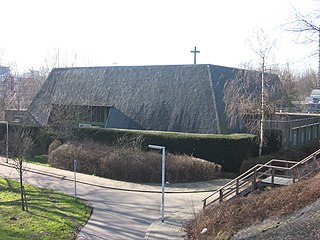
The Vierhovenkerk is a (Protestant) church in Delft, in the Dutch province of South Holland. The church bore the name Good Shepherd Church until 1997. The Good Shepherd Church, on the Obrechtstraat, was built in 1972 as a Reformed Church.
20. Adelbertkerk
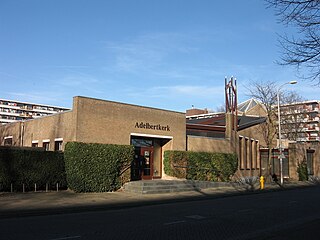
The St. Adelbert Church is a Roman Catholic parish church in the Voorhof district in the city of Delft, in the Dutch province of South Holland. The church is part of Sint Ursulaparochie. The church is dedicated to Saint Adelbert van Egmond. This saint refers to the Adelbertland, a part of the polder on which the new apartment district is built. The church building on the Minervaweg was consecrated on May 6, 1967 by Mgr. Jansen.
21. Lepelbrug
The Lepelbrug in the Dutch city of Delft, province of South Holland, is a bridge from 1929 over the Delftsche Vliet. The bridge forms a connection between the center of Delft and the site of the former Calvé factory and further on the main road to Rijswijk, 't Haantje, the Lange Kleiweg and the Jaagpad along the Delftsche Vliet.
22. Génestetkerk
The Génestetkerk is a Remonstrant church from 1896 in the city of Delft, in the Dutch province of South Holland. The church is located behind a gate on the Oude Delft in a courtyard on the site of the former clandestine church. It is a design by Leonard Couvée. The church is named after the preacher and poet P.A. de Génestet.
23. Agnetapark
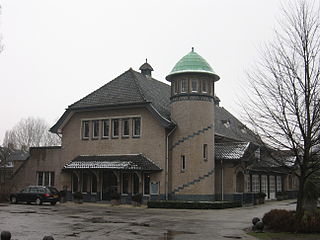
Agnetapark was an area of workers' housing in Delft, South Holland, the Netherlands. It was one of the highest quality workers' housing areas built before the Housing Act of 1902 was imposed. It was 'transformed' from a marshy 4 hectares area of land to a 'paradise' of industry. It is named after Agneta Matthes as she helped transform it.
24. Synagoge Delft
The synagogue in Delft, in the Dutch province of South Holland, is a neoclassical synagogue with a white plastered ionic tempelfront. The synagogue was built in 1861-1862 for being able to keep Jewish religious meetings.
25. De Delftse Donderslag, 1654
Delft is a city and municipality in the province of South Holland, Netherlands. It is located between Rotterdam, to the southeast, and The Hague, to the northwest. Together with them, it is a part of both the Rotterdam–The Hague metropolitan area and the Randstad.
26. Hofje van Pauw
The Hofje van Pauw is one of the four remaining courtyards in the city of Delft, in the Dutch province of South Holland. There used to be seven courtyards. The Hofje was built in 1707 in accordance with the stipulation in the will of Elisabeth Pauw, the daughter of the mayor of Delft, Jacob Pauw, who died a year earlier. She was the widow of Johan van der Dussen and then of (nephew) Dirck van der Dussen, both also mayors.
27. Immanuëlkerk
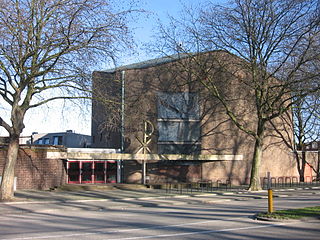
Until October 2013, the Immanuel Church was a Protestant community located on Schoemakerstraat in the city of Delft, in the Dutch province of South Holland. Since then, the building has been freed up in the hands of the Reformed Churches, which merged into the Dutch Reformed Churches in 2023. Together with the Peace Church and the now demolished Maranatha, this church formed the church triangle.
28. Lutherse Kerk
The Lutherse Kerk, also known as St. George's Chapel, is an 18th-century church in the Dutch city of Delft. The church's foundation was laid in the 15th or 16th centuries, with a wooden structure being built on top of it. This first wooden church burned down in 1536, and the city of Delft erected an armory where the church had stood. The armory was converted into the current Lutheran church in 1768, and a new stone facade and steeples where added to the existing building.
29. STALPAERT van de WIELE
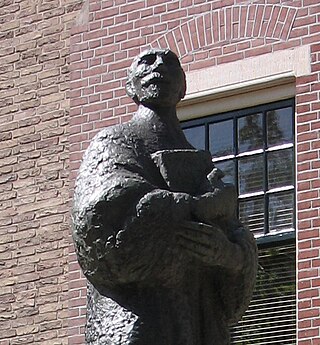
Johannes Stalpaert van der Wiele studied in Rome and Leuven and became a priest in Delft. In addition to the priesthood, he was a writer. He wrote hymns to saints. He was also an important writer of the Counter-Reformation, he wrote battle poems against the Reformed doctrine. He was buried in the Oude Kerk in Delft.
30. Kleine Oostpoortbrug
The Kleine Oostpoort Bridge is an iron drawbridge in the center of the Dutch city of Delft, province of South Holland. The bridge is located at the Oostpoort, the only remaining city gate in Delft. The bridge is a national monument and dates from the year 1514.
31. Gereformeerde Gemeente
The building Oosteinde 175 is a simple church in the city of Delft, in the Dutch province of South Holland. Originally, the building was built in the second half of the 17th century as a residence. The house was previously part of the pottery factory De Porceleyne Fles. The church building is a national monument, in which a congregation from the church federation of the Reformed Congregations currently meets.
32. Hugo Grotius
The statue of Hugo Grotius was erected in memory of the Delft-born jurist and Remonstrant leader Hugo Grotius. The statue, dating from 1886, was commissioned by a national committee, which had organised a competition for this purpose. The design, chosen from seventeen entries, is by the Haarlem sculptor F.L. Stracké jr. The bronze statue was cast in the Van Merkelbach factory of Enkhuizen & Co. in Breda and is placed on a high pedestal that was carved in Berlin at the Kessel & Röhl stonemasonry. The statue stands in the middle of the Markt and faces the town hall and has its back to the Nieuwe Kerk. The statue is part of the protected cityscape of Delft and is a national monument.
33. Catharijnebrug
The Catharijne Bridge is a bridge in the center of the city of Delft, in the Dutch province of South Holland. The bridge is a national monument and possibly dates from the 18th century (construction), around 1950 the bridge was widened and lowered, It bridges the Oosteinde moat.
34. Mauriciusbrug
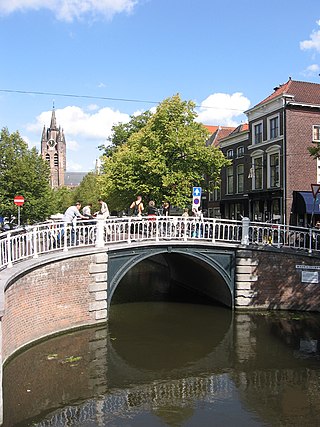
The Mauricius Bridge is a bridge in the city of Delft, in the Dutch province of South Holland. The arch bridge, presumably designed by C.J. de Bruyn Kops, was built in the style of eclecticism around 1872. The bridge spans the Oude Delft between the Binnenwatersloot and the Peperstraat. The last restoration took place in 2000.
35. Oudemanhuisbrug
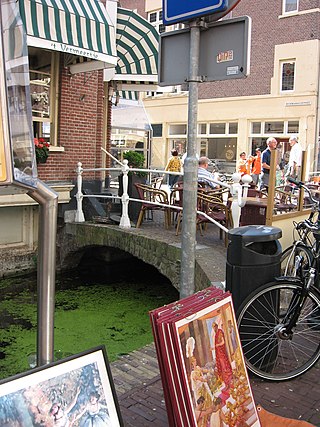
The Oudemanhuis Bridge is a brick arch bridge in the center of the city of Delft, in the Dutch province of South Holland. The bridge, which spans the Voldersgracht, is a national monument. It is not known what year the bridge comes from.
36. Agnietenbrug
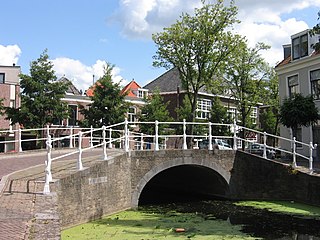
The Agnietenbrug is a bridge in the center of the Dutch city of Delft, in the province of South Holland. The bridge is a national monument and dates from 1964. It bridges the Gasthuisgracht with its quays Gasthuislaan near Oosteinde.
37. Drapeniersbrug
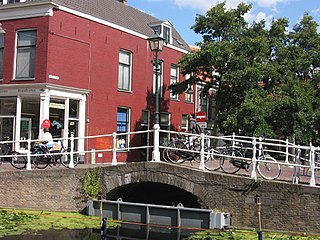
The Drapeniersbrug is a bridge in the center of the Dutch city of Delft, in the province of South Holland. The bridge is a national monument. The bridge possibly dates from the 18th century and bridges the moat.
38. Poelbrug
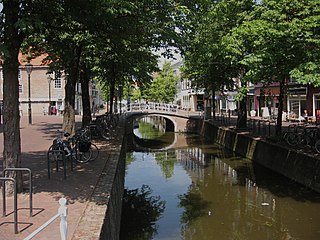
The Poel Bridge, in the Dutch province of South Holland, is a brick arch bridge in the center of Delft near the Oude Kerk. The bridge is a national monument and dates from the 18th century and bridges the water of the Voorstraat.
39. Het Blauwe Hart
The Blue Heart is a work of art in the center of the Dutch city of Delft from 1998, designed by Marcel Smink. The artwork consists of blue glass panels on a stainless steel frame. The artist wants to refer to the technical 'heart' of Delft, namely the Technical University. The colour of the glass refers to Delft blue.
40. Haverbrug
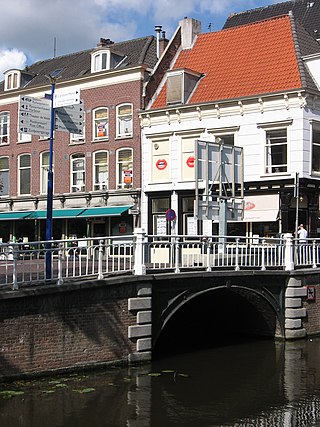
The Haverbrug is a masonry arch bridge with iron front plates in the center of the city of Delft, in the Dutch province of South Holland. The bridge is a national monument and was probably built in the year 1872.
41. Drogerijbrug
The Drogerijbrug is an arch bridge in the center of the city of Delft, in the Dutch province of South Holland. The bridge bridges the Vlamingstraat and is a national monument. The bridge was lowered in 1950.
42. Visbrug
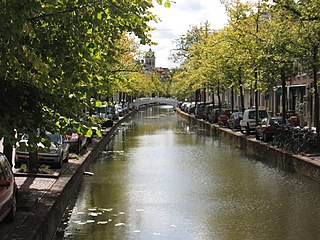
The Visbrug is an iron footbridge from the late 19th century, in Venetian-like neo-Renaissance forms, in the center of the Dutch city of Delft, province of South Holland. The bridge is located at the Voorstraat, and is a national monument.
43. Vrouwe van Rijnsburgerbrug
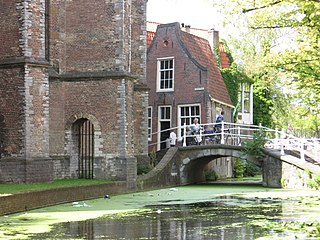
The Vrouwe van Rijnsburgerbrug is a brick arch bridge in the center of the city of Delft, in the Dutch province of South Holland. The bridge is located right next to the Nieuwe Kerk and is a national monument. The bridge dates from the 16th century and is therefore one of the oldest bridges in Delft.
44. Gasthuisbrug
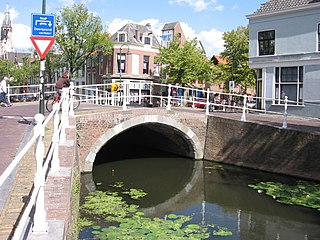
The Gasthuisbrug is an arch bridge in the center of the city of Delft, in the Dutch province of South Holland. The bridge is a national monument and dates from the year 1575 and it bridges the Brabantse Turfmarkt.
45. Van Leeuwenhoekpark
The Van Leeuwenhoek Park is a (future) park in the South Holland city of Delft. The park was built on the former railway line of the Amsterdam - Rotterdam railway line. The first phase of the construction of the park started in September 2022.
46. Hoogbrug
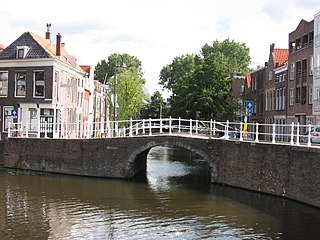
The Hoogbrug is a brick arch bridge in the center of the city of Delft, in the Dutch province of South Holland. The bridge, located near Achterom, is a national monument and was probably built in the 16th century.
47. Schout van der Meerbrug
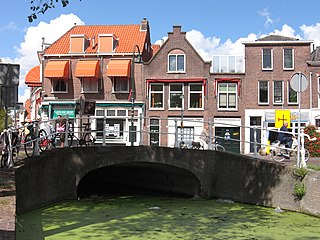
The Schout van der Meer Bridge is a concrete arch bridge in Delft, in the Dutch province of South Holland. The bridge connects the water of the Vrouwenregt and the Oosteinde and the streets Oude Langendijk and Nieuwe Langendijk. The bridge is a national monument
48. De Kaerskorf
De Kaerskorf and De Maen are two historic buildings in the city center of Delft and located at Markt 2-4. The Kaerskorf is the most eye-catching corner building near the Cameretten. Since the two buildings are historically linked, both are discussed below.
Share
How likely are you to recommend us?
Disclaimer Please be aware of your surroundings and do not enter private property. We are not liable for any damages that occur during the tours.
